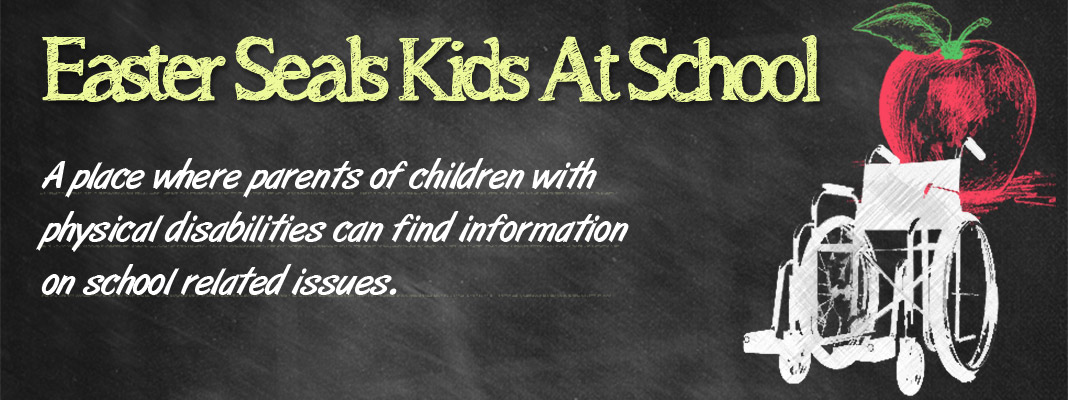When we hear the word accommodation we usually think about the place where we live or hotels and other places to stay. Under Human Rights legislation, the goal of accommodation is to help everyone have equal opportunities, access and benefits. In schools, accommodations are the supports and strategies provided to an individual student to help them access the curriculum (understand what is being taught) and demonstrate learning (show what they have learned).
Students with special education needs require a variety of supports and strategies depending on their individual needs. Accommodations are divided into three types:
- Instructional accommodations that assist the student to learn
- Environmental accommodations include equipment and other changes to the surroundings where students learn
- Assessment accommodations enable the student to show what they have learned.
For students with a physical disability the following are examples of the types of supports and strategies that might be provided. You will notice that some strategies appear in more than one category. For example, Assistive Technology can help students as an instructional strategy (text to speech software) and as an assessment strategy, (speech to text software). Augmentative and Alternative Communication (AAC) is used both for learning and when being assessed.
The following list includes examples of some of the common accommodations and there are other strategies or supports, including those that are unique to your child, that may be listed in the Individual Education Plan (IEP).
Instructional Strategies:
- Note-taking assistance by a peer, or a scribe
- Duplicated notes from the teacher or a peer
- Extra time for processing information
- Augmentative and alternative communications systems
- Assistive technology, such as text-to-speech software
- Special equipment such as Laptop with modified keyboard
- Accessible reading materials such as audio tapes, large print or e-books
- Activity pacing, options for breaks
Environmental Accommodations:
- Reduction of audio/visual stimuli, minimizing of background noise
- Quiet setting or alternative location for working
- Use of headphones
- Special lighting
- Assistive devices or adaptive equipment
- Walker or other mobility equipment
- Special equipment such as adapted mount for keyboard
- Stand by supervision for safety in gym, hallways, schoolyard
Assessment Accommodations:
- Extended time limits for assignments and tests
- Verbatim (word for word) scribing of student’s answers
- Alternative settings for taking tests or completing tasks
- More frequent breaks
- Assistive devices or adaptive equipment
- Augmentative and alternative communications systems
- Assistive technology, such as speech-to-text software
- Reduction in the number of tasks used to assess a concept or skill
The students’ strengths and needs, and the accommodations they require to learn, are documented in the Individual Education Plan (IEP). For students, who are working at grade level, their program may be accommodated only. This means they are working on all of the same learning expectations as the other students in the class, but they need these accommodations to learn and show what they have learned. Other students, who are working at a higher or lower grade level or on an alternative program, may need accommodations as well as a modified (different grade or more or less expectations) or alternative program (not part of the Ontario curriculum).
All IEPs are required, by the Ministry of Education, to be reviewed within 30 school days of the start of the school year. These reviews should still be taking place even in schools where teachers and other staff are involved in labour disputes. You should be invited to participate in the IEP review and have an opportunity to comment on the IEP being developed for this school term. You can check with the Principal to find out who is leading the review of your child’s IEP.
Take a look at your child’s current IEP and check the list of accommodations. Consider whether the supports and strategies listed are helping your child and whether there are other accommodations that might be helpful. If you have any suggestions for changes talk to the IEP team. Your input is valued as you know your child best.
For more information on accommodations, and your role in the IEP, check the Ministry of Education document: Individual Education Plans: A Resource Guide (2004) available on-line at: http://www.edu.gov.on.ca/eng/general/elemsec/speced/guide/resource/index.html

This was a great info! Will be watching for more.